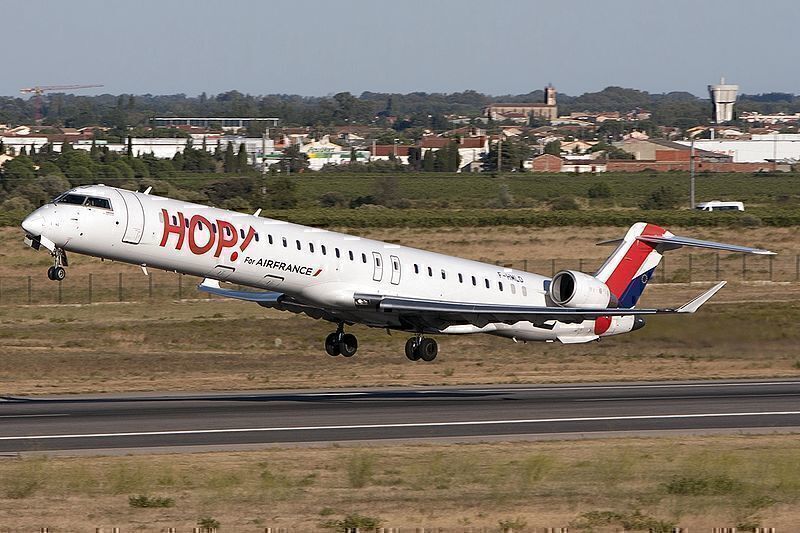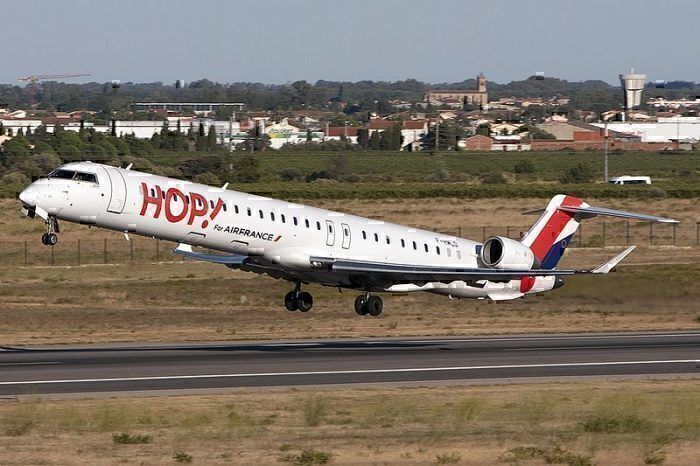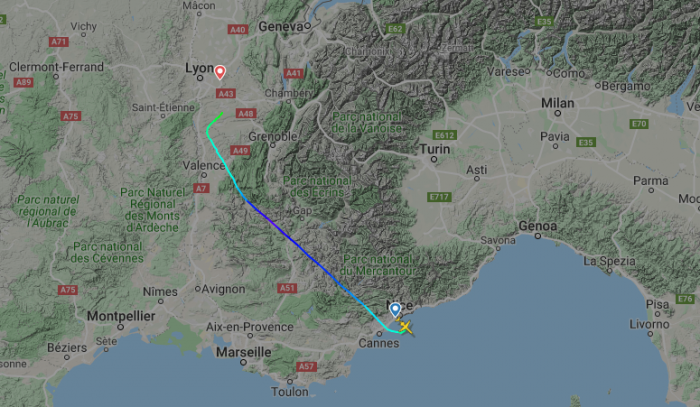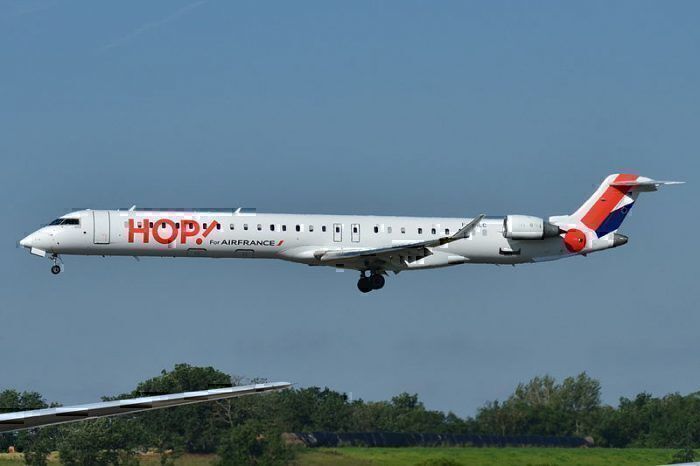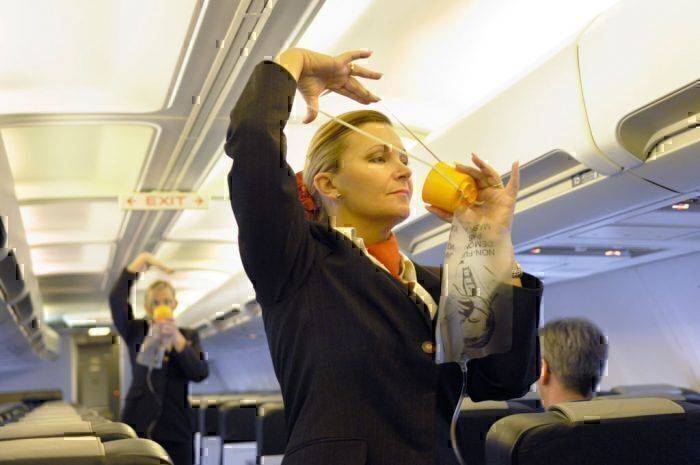** Update 6/1/2020 @ 16:00 UTC – Air France wrote to Simple Flying regarding the cabin pressure incident on AF1360 saying:
“Air France confirms that the crew of flight AF1360 on 1 January 2020 from Nice to Nantes by Bombardier CRJ-1000 decided to divert to Lyon Saint Exupéry airport following a technical problem with the air pressure system.
The aircraft landed normally at 14:17. The passengers were immediately assisted by Air France staff at Lyon airport and provided with transport to Nantes airport. All passengers were able to reach their final destination.
Air France regrets the inconvenience caused and states that the safety of its customers and crews is its absolute priority. Pilots and cabin crew are regularly trained to deal with this type of technical problem”**
On New Year’s Day, a HOP! Air France Bombardier CRJ-1000 was forced to divert to Lyon following a loss of cabin pressure.
Popular airline incident website the Aviation Herald has reported that HOP! Air France flight number flight AF-1360 from Nice Côte d'Azur Airport (NCE) to Nantes Atlantique Airport (NTE) was forced to divert to Lyon-Saint Exupéry Airport (LYS).
The Canadair CRJ-1000 registration number F-HMLL was climbing through 32,000 feet when the crew noticed a loss of cabin pressure. The captain of the flight immediately initiated an emergency descent taking the Canadian-made plane down to 1,000 feet.
Due to a sudden loss of cabin pressure, the passenger oxygen masks were deployed while the aircraft diverted to Lyon-Saint Exupéry Airport, where it landed safely some 15 minutes later.
The Aviation Herald reported that the aircraft was still on the ground at LYS some 32 hours after landing.
Why do airlines pressurize their cabin?
Airlines pressurize their cabins so that it feels as though you are still on the ground. Aircraft fly at a greater altitude where they are more fuel-efficient; the downside of this is that there is not enough oxygen for the crew and passengers to breathe.
By flying at high altitudes, aircraft become more efficient as there is less drag due to the thinner air. The engines need to work harder though, as there is less oxygen in the air to mix with the fuel. To counter this, airlines calculate, depending on the aircraft type what is the best trade-off for speed and fuel efficiency.
Most airlines pressurize their cabins to be between 6,000 and 8,000 feet, thus allowing you to breathe normally.
How do aircraft lose cabin pressure?
We have all heard in the safety briefing before takeoff:
“Should the cabin experience sudden pressure loss, oxygen masks will drop down from above your seat. Place the mask over your mouth and nose and breathe normally.”
Aircraft can lose cabin pressure in several ways; due to a technical problem with the pressurization system, an improperly closed door, or a crack in a window or the aircraft’s fuselage.
For most of us, even those who fly dozens of times a year, the chance of an aircraft losing cabin pressure while you are on-board is very slim. Having said that, the incident with the HOP! Air France Bombardier CRJ-1000 shows that it still happens from time to time. In the case of flight number AF-1360 the pilots followed the rulebook to a tee donning their oxygen masks before performing an emergency descent.
You have around 18 seconds to put on your mask
Passengers on commercial aircraft have around 15-minutes of oxygen available from the masks when they drop down from the overhead bins. This is more than enough time for the pilot to get the aircraft down to a height where you no longer need the mask.
According to a directive put out by European plane maker Airbus, when flying at around 40,000 feet you have 18 seconds to put your oxygen mask on. Any more than that and you start to become disoriented before going unconscious. As of now, we do not know why AF-1360 lost pressurization, but have contacted HOP! Air France for more information. Once we hear back we will publish an update to this story.
If you have ever been on a flight in which the oxygen masks were deployed, please tell us about it in the comments section.

